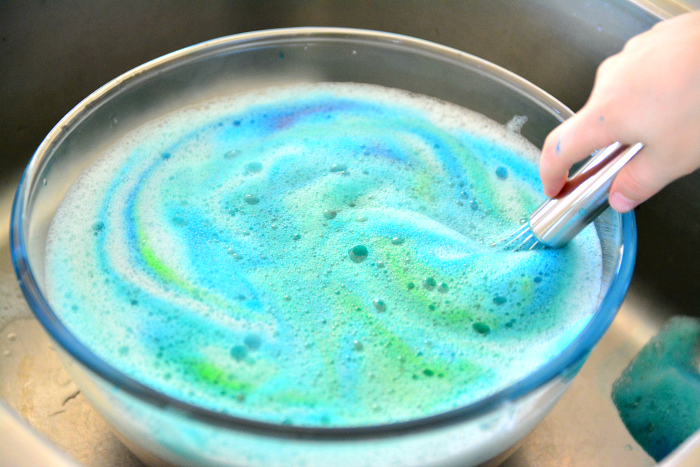All About Truck Tires
When searching for tires, you might hear of two types: P-metric and LT. P stands for passenger, and LT stands for light truck. Neither of these is used for a semi-truck and you would be best to avoid them.
Commercial tires don’t have a specific typing, so we will just call them commercial tires. Commercial tires tend to have more tread and are made of harder rubber, making them less likely to puncture but also make the drive less comfortable for the driver. They also cost a lot more than a standard passenger tire, in part because of their design and in part because of their size. Don’t try to use a P-metric or LT tire in substitution for a commercial; that’s a safety hazard.
Understanding tires
The above string of characters might seem like gibberish to the untrained eye, but it tells us a lot about the tire. What does this combination mean? Because each section represents something different, let’s take it one step at a time.
225-Tire width. Tire width can be displayed in terms of inches or millimeters. You should be able to tell which just by looking at the number, a 225-inch tire would be more than twice as wide as the truck itself, and a 9-millimeter tire would be too small for a bicycle, let alone an 18 wheeler.
/80-Aspect ratio. The slash might make you initially think the aspect ratio is the width divided by 80, but clearly, the height of the tire is larger than 3 millimeters. No, this number represents the percentage of the length of height to width, with the slash being a divider to separate the width and the aspect ratio.
R-Tire type. R stands for radial (steel belts inside running 90-degrees from the direction the tire is facing), a dash is bias-ply (nylon belts running anywhere from 30 to 45-degrees from the direction the tire is facing). Much less common are B for bias belt and D for diagonal.
22-Diameter. Not the diameter of the tire, but rather the diameter of the hole in the center of the tire. A 22-inch wheel is a perfect fit for this tire.
119-Load index. How much weight a single tire can hold. The further down you go, the more each number adds. 119 is 1,360 kilograms or about 3,000 pounds.
U-Speed rating. How fast the tire can go under its maximum load. A tire can go faster than this at a lower load, and generally, the speed limit will be much lower than your tire’s speed rating anyway. A U rating is 124 MPH.

When to Replace Tires
Even if your tires still have plenty of tread remaining, their structural integrity may be diminished — an aging effect that’s not always visible to the naked eye and makes your tires more susceptible to blowouts.
Most tire and automobile manufacturers recommend that tires should be replaced every 6 to 10 years regardless of use, regular rotation and lack of damage, with 10 years being the absolute maximum service life. This range applies to the tires you drive on every day, as well as spare tires. Still not sure when you should replace your tires? Be sure to check your owner’s manual for specific recommendations for your particular set of tires.
Bubble in Tire Sidewall
If you have a gumball-shaped bulge sticking out from the side of your tire, it should not to be ignored. It is usually not a defect and is a lot more dangerous than it looks because it’s actually an air bubble on your tire that could cause a deadly blowout. Side tire bubbles aren’t repairable — the entire tire must be replaced before a blowout occurs.
If you have a bubble on the side of your tire, be sure to drive slowly and take your vehicle in to your nearest tire repair shop or auto dealership. It’s a ticking time bomb that could quite literally explode at any time — when, for example, you’re cruising at 80 miles per hour down the highway — causing a blowout that can put your life and others’ lives at risk. In fact, the NHTSA has estimated that 11,000 crashes each year are caused by tire failure.
And, if you’re replacing one tire, it’s best to replace at least two tires. If you’re routinely rotating your tires, it’s best to replace tires in sets of two or four to maintain even wear. It might sting financially at first, but replacing tires in sets will surely save you money in the long run. If you do buy two tires instead of all four, you should always have the new tires installed on the rear axle and move the old, partially worn tires to the front axle — those new rear tires will provide the utmost traction and control.
Dry Rot on Tires
Keep an eye on your tires — if you notice spider-like hairline cracks, or dry rot, along the sidewalls and tread, then it’s a good idea to have your tires inspected by a professional. Dry rot causes tires to fall apart and separate from the steel belt.
Another indication that your tires have dry rot and should be replaced is if they have turned from black to a dull gray wherever the cracks appear. This condition is common in vehicles that are stagnant or improperly stored. If you do notice dry rot forming on your tires, make sure to get them replaced before you do any high-speed driving.
Dangerously Low Tire Tread
Last but not least, tire tread should be factored in when considering whether to replace your tires. If the tread on your tires is worn and bald, your traction and your safety are impacted. A healthy tread helps your tires grip the road and your vehicle quickly respond in adverse weather.
You should be sure to check the tread regularly and replace your tires if the tread has been worn down to 2/32″. When your tread gets this low, replacing your tires isn’t an option — it’s a legal requirement. By law, your tires are considered to be exhausted and unsafe for driving when they reach that 2/32″ level.
What Is The Difference Between Car and Trailer Tires
One of the great things about this time of year is the cooler weather and enjoyable time that can be spent outdoors. It’s a great time to hitch up the trailer and head out of town for a long weekend and enjoy the changing season . While spending more time driving and on the road, the possibility of experiencing a flat or other tire malfunction is increased. It might even be tempting in a stressful situation to consider putting a trailer tire on your vehicle or vice versa, but that could be risky decision.
At the most fundamental level, vehicle tires and trailer tires are built differently –from the sidewalls and tread to the ply and structure. Yes, they are both tires but their functions and the duties that they perform to keep you on the road are different.
Truck or car tires are made to be on a lead vehicle. They have thick tread to maintain traction on slippery road and sharp turns. They are also designed to handle the higher speeds of highway driving.
Trailer tires, on the other hand, are designed to be on a following vehicle. They have thicker sidewalls to handle debris and other objects that maybe projected at them. The tread is not as thick as car tires and they are not as capable at maintaining traction. In fact they are specifically designed to accommodate the sway that trailers typical experience. Because it is not recommended to drive above 80 miles per hour with a trailer, trailer tires can not handle speeds much greater than 80.
If your vehicle and your trailer have the same size tire, it is strongly discouraged that you share tires between them. Both keep you moving down the road smoothly, but they perform different functions that really can’t be interchanged.
TIRE POSITION
The type of tire is not the only factor in the quality of your drive, but where you place the tire. There are three general locations to put a tire to get different changes in results:
Steer tires. The frontmost tires on your truck, and arguably the most important ones. These tires impact your truck’s handling.
Drive tires. Located where the truck meets the trailer, these tires are the ones turned to make the vehicle move. These tires determine your truck’s grip on the road, so high traction tires are a must during the winter seasons and are still a good idea otherwise.
Trailer tires. Located at the back with the trailer, these tires tend to be especially stiff to better support the weight put upon them.
You can either purchase tires specifically for the position or use all-position tires to place them anywhere. If you place a specifically marked trailer tire in the steering area, though, you may have a hard time steering.
























